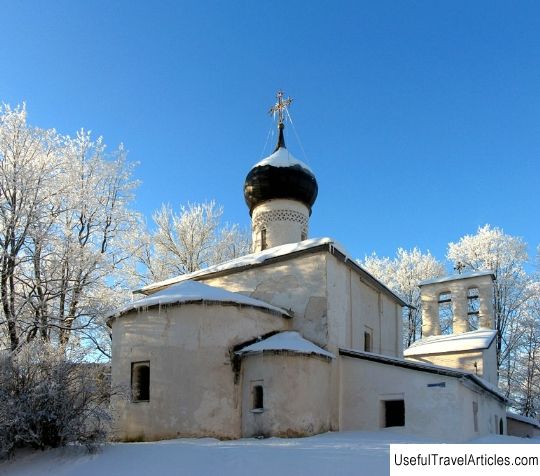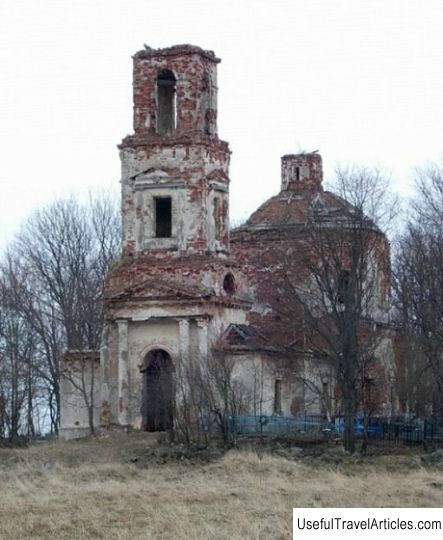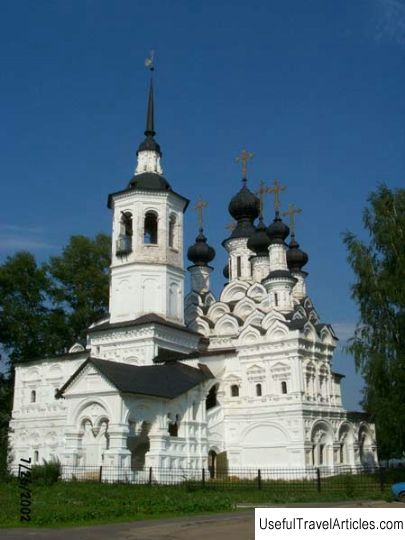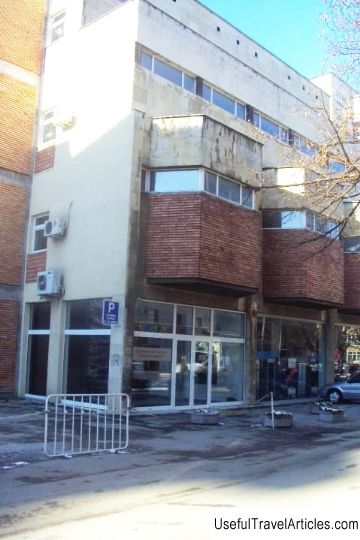Church of the Ascension of Christ from Polonische description and photos - Russia - North-West: Pskov
Rating: 8,5/10 (2930 votes) Church of the Ascension of Christ from Polonische description and photos - Russia - Northwest: Pskov. Detailed information about the attraction. Description, photos and a map showing the nearest significant objects. Photo and descriptionThe Church of the Ascension of the Lord from Polonischa is an ancient temple in the city of Pskov. Built in 1373-1375. It was located at the intersection of Romanikha and Novaya Ulitsa. Stands on a picturesque hill. Its construction is associated with the life of Prince Eustathius. Since the beginning of its existence, the temple belonged to a nunnery, founded in the 14th century. Before the construction of this new Ascension Church, there was another, old Ascension Church nearby. Therefore, for distinction, the old temple began to be called the "Old Ascension", and the new one was called "Novo-Voznesensky". In 1764, due to the closure of the monastery, the Novo-Ascension Church became a parish church. Further, in 1786, it was assigned to the Church of the Praise of the Mother of God, which was also abolished in 1794. After that, the Church of Anastasia Roman was attributed to the New Ascension Church, and in 1813 - Sergievskaya church. Despite the rebuilding, by the 17th century the temple was dilapidated. It was ordered to disassemble it. However, the inhabitants of Pskov, headed by Postnikov, Podznoyev and Istomin, were against such radical actions and wanted to preserve the temple and their history. They submitted a petition to Emperor Alexander I for the preservation of the Church of the Ascension of the Lord. They signed a document on the care and restoration of the emergency structure of the temple and its further maintenance in proper condition. The amount of donations was 4,600 rubles in bank notes. However, the interest rate profit from this amount was small, it was not enough for the complete reconstruction and maintenance of the temple. He soon found himself in a deplorable state again. It was sad to look at the grassy roof. Then other donors helped to restore the church. The donations were timed to commemorate the salvation of the Royal family on October 17 (30), 1888. We are talking about a terrible train accident, as a result of which the carriage with the imperial family of Alexander III suffered a complete wreck, but the emperor and his family were not injured, they emerged from the wreckage unharmed. The work on the restoration of the temple was completed in 1890. The roof and dome have been completely renewed. The charitable contribution of Ya.A. Khilovsky was restored and the iconostasis was gilded. The temple is compositionally balanced. Built of stone slabs. Its length with a belfry is just over 20 meters, width - 14 meters, height to the cornice - 8 meters. On the east side there are 2 apses - large and small. There was also a chapel of Our Lady of Hodegetria with an apse, but in 1830 it was dismantled, despite the fact that the church had already begun to be restored. According to Godovikov's manuscript, after the side-chapel was removed, the burial of one schema monk in imperishable vestments was discovered. His coffin was transferred to the Dmitrov cemetery. After dismantling the side-chapel, 2 apses, a narthex, a northern tent and a bell tower remained. The latter deserves special attention. She was admired by I.E. Grabar, considering her "the most beautiful of the belfries" and believing that "she is amazingly slender in her proportions, in which nothing can be changed for the better." The belfry was built at the same time as the temple. Has 3 pillars. It used to have 2 bells, but they were badly broken. In 1900, the Gatchina Bell Factory made to order 1 bell instead of two dilapidated ones, which was hung on the belfry on May 14, 1900. The basement of the bell tower was used for warehouses. A priest and a psalmist were assigned to the church. Since 1884, the parish guardianship functioned. During the Great Patriotic War, the church building was partially damaged. The temple was closed on August 5, 1924 due to the revolution and the new government. The building was to be transferred to the museum. Today the church is inactive, the premises are the museum's storage facilities.    We also recommend reading Castle Falkenstein (Burg Falkenstein) description and photos - Austria: Carinthia Topic: Church of the Ascension of Christ from Polonische description and photos - Russia - North-West: Pskov. |





